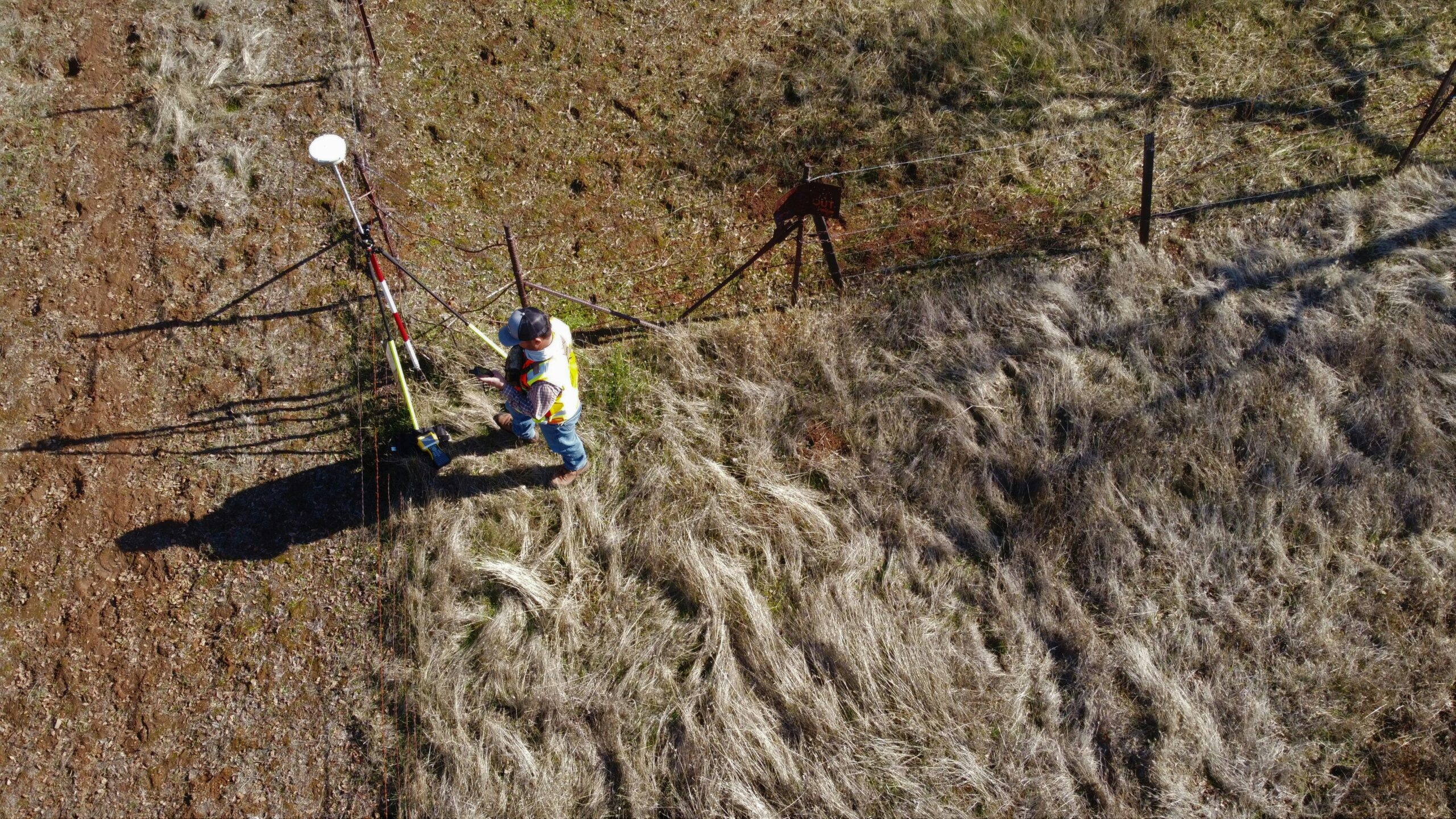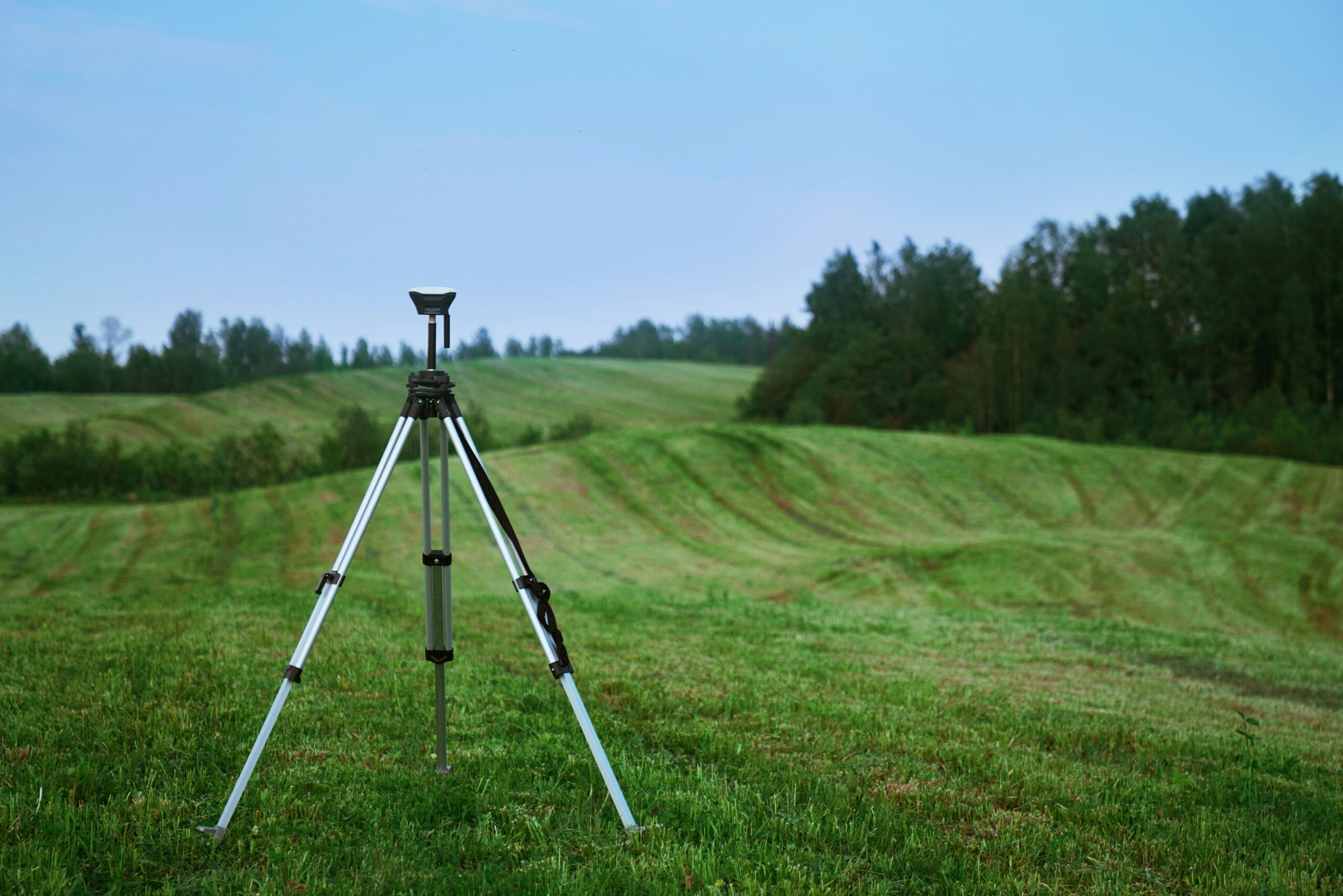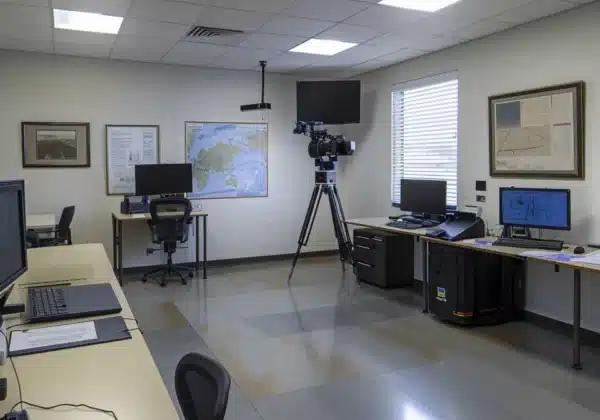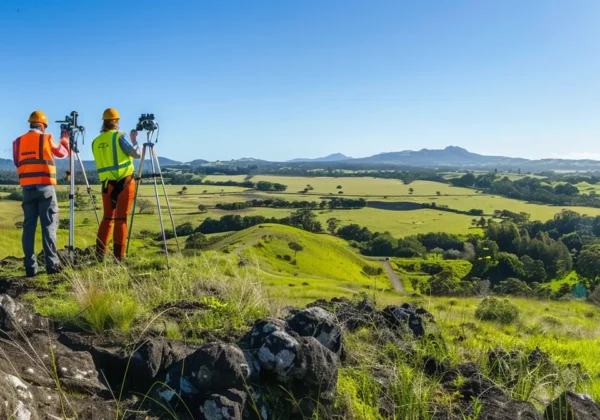Understanding Land Surveying and Its Role in Real Estate
Are property measurements causing uncertainty during your transactions? This blog post explains land surveying and its role in real estate, covering the basics, its function in property transactions, and how zoning laws affect outcomes. You will gain a clear answer to common concerns and practical tips to manage measurements accurately. The article addresses problems like unclear boundaries and outdated survey methods. Enjoy precise, actionable insights that help you take effective steps in real estate decisions.
Understand the Basics of Land Surveying in Real Estate
This segment explains what land surveying entails and clarifies its purpose. It reviews various survey types, the techniques used, and key standards to follow. The text also covers the role of technology for accuracy and touches on topics like home surveyor roles, land surveying positions, surveyor cost details, boundary survey practices, and topographic map creation.
Discover the Definition of Land Surveying and Its Purpose
Land surveying is a process that gathers essential data to determine property boundaries and features with precise measurements. This process not only provides valuable knowledge for real estate transactions but also ensures that any potential issues, such as a lawsuit over property lines, are prevented, making the work of surveyors critical for trust in land transactions.
The role of surveyors extends beyond physical measurements, as they apply their expertise to make informed decisions during development projects. Clients seeking surveyors in my area benefit from the expertise inherent in a thorough land survey, which significantly reduces the risks associated with property disputes.
Learn About Different Types of Land Surveys and Their Uses
Different types of land surveys offer unique benefits depending on project needs. A topographical survey provides detailed information about land contours and features while techniques like lidar enhance the accuracy of data collection by integrating advanced sensor technology. This survey often uses a coordinate system, helping a propertysurveyor ensure measurements meet project specifications.
Other survey types address specific project challenges and site characteristics, allowing stakeholders to find a surveyor who best fits their requirements. Practical examples include boundary surveys and construction site surveys that benefit from modern techniques such as lidar, ensuring clear property definitions and streamlined planning processes.
Explore the Tools and Techniques Used in Land Surveying
The article explains that advanced geomatics instruments assist surveyors in obtaining precise data for a property survey, ensuring measurements meet a local jurisdiction‘s regulations. Reliable techniques also support the development of an accurate plat that eases the process of acquiring title insurance and reducing legal complications.
Surveyors use modern tools to map environments with precision, a critical factor when gathering data for a property survey. Through practical application of geomatics, professionals create detailed plats that support the requirements of jurisdictional authorities and assist in streamlining title insurance procedures.
Identify Key Surveying Standards and Regulations to Follow
Surveying standards require adherence to local regulations such as zoning codes and easement rules to ensure property boundaries are clearly defined and disputes are minimized. These guidelines help professionals deliver reliable surveying services while addressing concerns like potential flood risks that may affect property stability.
Industry professionals must follow specific protocols that align with regional authorities to ensure measurements are valid and legally accepted. Searchers for survey technician jobs near me benefit from observing these standards, as they assure success in every step of the property assessment process.
Recognize the Importance of Accuracy in Land Surveys
Accuracy and precision in land surveys play a crucial role in ensuring that legal boundaries and property details are clearly documented, reducing the risk of disputes over a deed. Experts in geodesy use advanced techniques to safeguard measurement integrity, directly affecting property survey cost and compliance with local law guidelines.
Survey professionals consistently rely on refined methods to secure reliable outcomes that stakeholders depend upon. Their commitment to achieving high standards in accuracy and precision not only minimizes issues during legal proceedings but also fosters trust throughout real estate transactions.
Examine the Role of Technology in Modern Land Survey Processes
Modern technology streamlines the work of a private surveyor by providing real-time data that improves measurement accuracy and efficiency. Innovations in equipment allow surveyors to capture an angle quickly, reducing both property line survey cost and land survey cost while ensuring reliable data for alta surveys.
Advanced instruments and software empower surveyors to reduce human error and achieve precise measurements on site. Techniques using high-tech tools support a comprehensive approach where data integration directly influences property line survey cost and aligns with standards set by alta surveys, benefiting every stakeholder involved.
Understanding the Importance of Land Surveying in Real Estate

Examine the Role of Land Surveying in Property Transactions
Land surveying plays a decisive role in property transactions, influencing assessments like the cost of house survey and boundary survey cost. Surveys detail features such as elevation and support construction, dispute resolution, and clear title transfers. They outline surveys’ process and address issues from inaccuracies, while tools like a total station contribute to reliable insights during property development projects.
Understand How Surveys Impact Property Value Assessments
A thorough survey conducted by a residential surveyor establishes property boundaries, which helps determine the influence of elements like fences on overall property value. The survey provides crucial inspection details that enhance mortgage negotiations and support potential buyers in making informed decisions.
Survey findings serve as a foundation for evaluating a property‘s worth by addressing any discrepancies that might affect appraisal results. A professional in the field utilizes precise measurements and reliable data to prevent disputes, ensuring that every aspect of the property delivers on its estimated value.
Learn About the Process of Obtaining Property Surveys
Obtaining a property survey begins with consulting an experienced surveyor who is well-versed in verifying legal boundaries and producing clear plat records. This process involves a thorough exam of the land survey land details using modern surveying methods endorsed by the american land title association to ensure that property measurements meet all regulatory guidelines.
Professionals in surveying work systematically to collect accurate data and document physical features that can influence real estate transactions. They use an exam approach to assess vital elements, providing clients with reliable insights that support informed decisions regarding property value and dispute resolution.
Review Common Issues Arising From Inaccurate Land Surveys
Inaccurate land surveys can lead to confusion regarding property boundaries and regulatory compliance, impacting civil engineering projects and residential developments. Professionals observe that errors in a property line survey or misinterpretations of a geodetic datum can complicate the job of a land surveyor, requiring remedial location survey efforts that increase project costs and timelines.
Experts note that imprecise data collection not only challenges the accuracy of property line surveys but also risks undermining the reliability of civil engineering designs. As mistakes in recording a geodetic datum or executing a location survey emerge, the job of a land surveyor becomes more complex, necessitating additional verification to restore confidence in property assessments.
Assess the Importance of Surveys in Real Estate Disputes
A professional land surveyor plays a crucial role in resolving disputes over property, minimizing conflict, and ensuring accurate documentation in areas like new york city, where infrastructure challenges frequently arise. Accurate surveys reduce home survey cost disputes and provide essential data that supports efficient resolution of issues in property ownership.
An exact property survey conducted by an experienced professional land surveyor fosters confidence in legal matters, helping prevent litigation over boundary lines. This approach benefits stakeholders by clarifying infrastructure details and streamlining dispute resolution processes, ultimately ensuring stability in property transactions.
Discover How Surveys Facilitate Clear Title Transfers
Surveys help facilitate clear title transfers by confirming legal boundaries using precise geometry measurements. Professionals often reference guidelines from the national council of examiners for engineering and surveying to maintain a legal framework that minimizes disputes, especially in areas like queens where property lines can be a sensitive subject.
By verifying landmarks and data with accuracy, experts ensure that all title transfers meet local regulations. This approach reassures involved parties and provides a reliable standard, reducing concerns for buyers and sellers by aligning with the best practices recognized by the national council of examiners for engineering and surveying in regions such as queens.
Explore How Surveys Aid in Property Development Projects
Accurate surveys boost project planning by providing developers with reliable boundaries, topographic data, and clear site features essential for efficient planning and construction. Detailed surveys ease texturing of demolition and renovation plans, minimizing the risk of unexpected delays during property development projects.
Developers rely on precise survey data to secure permits and manage construction expenditures, ensuring that project layouts adhere to local regulations and zoning laws. Trusted survey results help guide the placement of buildings and infrastructure, reducing uncertainties that may impact project timelines and budgets.
Understanding the Importance of Land Surveying in Real Estate

Explore the Connection Between Land Surveying and Zoning Laws
Land surveying shapes zoning decisions by clarifying key regulations on property use. Detailed surveys inform variances and ensure alignment with land use planning and zoning laws, while case studies demonstrate how survey data impacts compliance. This overview connects essential insights on zoning, variances, and planning, setting the stage for deeper exploration of each topic.
Understand Key Zoning Regulations Affecting Property Use
Key zoning regulations define allowed land uses and building parameters, impacting how properties can be developed or repurposed. These standards guide developers and property owners in meeting local legal requirements, ensuring that construction projects follow established criteria that support community planning and safe property use.
Local authorities rely on these regulations to assess boundary measurements and supervise construction projects, providing clear guidelines for property modifications and renovations. By adhering to these zoning standards, professionals in real estate and surveying work together to minimize legal disputes and promote stability in property development efforts.
Identify How Land Surveys Inform Zoning Decisions
Land surveys provide accurate data on property boundaries and terrain features, which local authorities use to determine zoning classifications. Detailed survey reports offer a clear picture of land conditions, ensuring that zoning decisions match the physical realities of the property and meet regulatory standards.
Survey results support precise identification of property limits and critical site characteristics, enabling zoning officials to set appropriate land use rules. Reliable survey information helps resolve discrepancies between planned development and zone regulations, ensuring that projects proceed with clarity and legal compliance.
Learn About Variances and Their Connection to Land Surveys
Variances in zoning laws often require accurate boundary and topographic data, which land surveys supply reliably. Professionals rely on survey results to propose adjustments to local regulations that may affect property development, ensuring that any deviations from standard zoning are justified and well-documented.
By providing precise measurements, a land survey supports the process of applying for variances in areas where strict zoning guidelines may hinder necessary modifications. Survey reports enable decision-makers to recognize real-world conditions and offer practical resolutions when standard zoning limits conflict with a project’s needs.
Review the Role of Surveys in Compliance With Zoning Laws
Survey data supports adherence to zoning regulations by offering accurate measurements and detailed site characteristics. This information helps officials determine if a property meets legal requirements and reduces risks associated with non-compliance during property development.
Experts rely on comprehensive survey reports to validate that construction and land use comply with local laws. Accurate survey findings provide a clear basis for decision-making in real estate, ensuring that projects follow prescribed zoning guidelines and enhance community planning.
Explore the Relationship Between Surveys and Land Use Planning
Surveys offer precise details on property dimensions and terrain features that greatly influence land use planning. This accurate data assists planning officials in setting regulations that align with physical site conditions and community needs.
Survey results form the backbone of land use planning by clearly outlining property boundaries and characteristics. Planners use this verified information to make decisions that balance development with responsible land management practices.
Examine Case Studies Highlighting Zoning and Survey Issues
Case studies in urban settings reveal frequent discrepancies between survey data and zoning determinations that can stall property development. Researchers note that clear survey reports help verify boundary changes and land features, thereby supporting regulatory compliance and resolving conflicts between property owners and municipal authorities.
Examples from metropolitan areas illustrate how updated surveys provide essential insights into zoning adjustments when land use plans change. Analysts observe that reliable survey measurements foster informed decisions and prevent costly disputes, offering practical solutions for real estate professionals and regulators.
Understanding the Importance of Land Surveying in Real Estate

Investigate the Impact of Land Surveying on Real Estate Development
Surveys shape site choices for developers, support environmental assessments, and guide infrastructure projects. Accurate surveys inform planning stages, ensure adherence to building codes, and involve key stakeholders. These evaluations provide essential insights into property potential, benefits in construction planning, and secure legal compliance, driving informed decisions throughout real estate development.
Assess How Surveys Influence Site Selection for Developers
Surveys significantly impact site selection by clearly mapping property boundaries and revealing site-specific features that are crucial for developers. These detailed reports help identify potential obstacles and benefits, ensuring that investments align with planning requirements and local regulations.
High-quality survey data supports informed decisions by providing accurate topographic details and land characteristics. Developers rely on these measurements to target optimal sites and avoid unforeseen challenges during the construction phase.
Explore the Role of Land Surveys in Environmental Assessments
Land surveys offer essential data for environmental assessments, providing developers with accurate information on terrain, water features, and vegetation. This information supports planning efforts by identifying potential environmental constraints and ensuring that future real estate developments follow local guidelines.
Environmental assessments benefit from precise land survey data by enabling experts to pinpoint soil conditions and assess natural hazards. Such insights help minimize project risks and guide developers in optimizing site selection and managing construction activities effectively.
Understand the Importance of Surveying in Infrastructure Projects
Surveying provides crucial data that drives smart decision-making in infrastructure projects, offering accurate measurements and detailed site features. This technique supports precise planning for road construction, utility placements, and other urban tasks, ensuring efficient project development and reduced risk.
Expert surveyors supply essential information that guides engineers during project planning, making it easier for stakeholders to address potential challenges. Their work helps establish clear boundaries and terrain conditions, which supports smooth permitting processes and improves overall project execution.
Review Surveying Needs During the Planning Phase of Construction
The planning phase of construction benefits significantly from thorough land surveying, as precise measurements and detailed plats set a strong foundation for final project designs. Professionals in real estate development rely on modern survey methods to accurately map terrains and document boundary details, ensuring that site plans comply with local regulations and facilitate smooth permitting processes.
Consulting with experienced survey technicians early in the construction planning process proves to be a cost-effective measure for developers, as accurate data prevents costly revisions later. Detailed survey records help identify potential challenges and support the efficient allocation of resources during construction, ultimately contributing to successful real estate projects.
Learn How Surveys Support Compliance With Building Codes
Surveys provide critical data that ensures compliance with building codes by producing precise measurements and detailed property records. These assessments help engineers and developers verify that proposed structures meet local safety and zoning standards, resulting in fewer delays and enhanced project approval certainty.
Accurate survey reports support building code compliance by documenting site conditions and property boundaries with clarity. This documentation assists officials in confirming that construction projects follow regulatory guidelines, thereby simplifying the permitting process and reducing potential legal complications.
Identify Stakeholders Involved in the Surveying Process
Stakeholders in the surveying process include project owners, developers, engineers, and local authorities, each playing a critical role in real estate development. Professionals such as licensed survey technicians and geomatics experts deliver precise data that informs design and construction decisions, ensuring compliance and accurate property boundaries.
Independent consultants and financial institutions also contribute to the process by reviewing survey reports to verify property details and support investment strategies. Their involvement helps establish clear records that minimize legal risks and streamline project approvals, which ultimately benefits all parties in real estate transactions.
Understanding the Importance of Land Surveying in Real Estate

Discover the Future Trends in Land Surveying Technologies
Surveying technology evolves with rising applications of drones, GIS mapping, and 3D modeling to boost land survey accuracy. Advancements in software and artificial intelligence streamline workflows, while emerging tools continue to shape the industry. This section offers practical insights on how these trends impact real estate and surveying practices.
Examine the Impact of Drones on Surveying Practices
Drones have transformed surveying practices in real estate by providing high-resolution aerial imagery that captures precise boundary details and land features. Their use enables surveyors to reduce field time while increasing data accuracy, making it easier for developers and property owners to rely on verified measurements.
Surveying professionals use drones to capture real-time information that aids in mapping complex terrains and monitoring large property areas. This technique helps resolve common issues related to data collection, increasing the reliability of property assessments and streamlining approval processes.
Explore the Use of Geographic Information Systems in Surveying
Geographic Information Systems help surveyors collect and analyze spatial data, offering precise location details and improving survey accuracy in real estate projects. This technology simplifies the processing of large datasets and supports efficient mapping of property boundaries, making it easier to handle complex land features.
GIS applications allow professionals to integrate diverse information sources and generate up-to-date visual representations of land conditions. This method provides clear insights for real estate developers and local authorities, ensuring that property assessments align with current regulatory standards.
Assess the Role of 3D Modeling in Land Survey Accuracy
Professionals in the field utilize 3D modeling to capture clear, detailed representations of terrain and property features, which improves accuracy in land surveys. Advanced modeling techniques support precise boundary establishment and provide critical information for real estate development decisions.
Industry experts apply 3D modeling to verify measurements and assess site characteristics, leading to more reliable survey outcomes. This approach directly addresses common challenges in rough terrain data collection and facilitates smoother approval processes for property projects.
Learn About Advancements in Surveying Software Solutions
Surveying software solutions now include integrated algorithms that improve precision in mapping and property boundary determination. New software tools allow surveyors to collect and process field data more efficiently, reducing manual tasks and streamlining real estate assessments.
Advanced platforms offer user-friendly interfaces and real-time data analysis to support accurate property evaluations and permit processes. Industry experts acknowledge that these software improvements help professionals overcome common challenges and boost confidence in land surveying for development projects.
Understand How Artificial Intelligence Is Transforming Surveys
Artificial intelligence reshapes the surveying process by streamlining data analysis and automating repetitive tasks. It integrates sophisticated algorithms that process geospatial data rapidly and accurately, which reduces field time and increases reliability in establishing property boundaries.
Professionals benefit from AI-powered tools that support precise measurements and real-time assessments, making the data collection process more cost-effective and efficient. This technology improves project outcomes by enabling survey teams to address site challenges quickly and meet regulatory requirements with dependable results.
Review Emerging Technologies Shaping the Surveying Industry
Recent advancements in sensor technology and data integration have transformed the surveying field, offering tools that improve accuracy and efficiency in property assessments. Industry experts report that innovations in photogrammetry and real-time data processing enable surveyors to deliver reliable measurements that assist stakeholders in making informed decisions. These emerging methods are pivotal in reducing project delays and supporting clear property boundaries for real estate transactions.
Innovations in remote sensing and automated data analysis have significantly reshaped the surveying industry by simplifying workflows and enhancing data collection methods. Survey professionals implement cutting-edge equipment that processes geospatial information quickly and accurately, providing greater assurance in real estate planning and project development. This evolving technological landscape continuously supports professionals in meeting regulatory demands while addressing practical challenges in the field.
Understanding the Importance of Land Surveying in Real Estate

Learn About Professional Land Surveyors and Their Qualifications
Professional surveyors hold essential qualifications that ensure precision and reliability in real estate projects. They require appropriate education, certification, and practical skills supported by recognized organizations. This section reviews the importance of hiring licensed surveyors, examines educational requirements, discusses the certification process, identifies key competencies, and evaluates career opportunities in the land surveying field.
Understand the Importance of Hiring Licensed Land Surveyors
Licensed land surveyors bring verified expertise that ensures precise property measurements and legal boundary confirmation. Their specialized training translates into accurate surveys that prevent future disputes and streamline real estate transactions.
Hiring professional surveyors supports efficient project planning and regulatory compliance, giving developers and property owners confidence in their property assessments. Their certified skills and experience provide reliable data essential for clear title transfers and safe construction practices.
Explore Educational Requirements for Aspiring Surveyors
Aspiring surveyors typically pursue a degree in surveying, geomatics, or a related field to grasp core principles such as measurement techniques, cartography, and field data collection. This educational path helps build a strong foundation in technical subjects and practical applications in real estate, ensuring that graduates are well-prepared for industry challenges.
Many academic programs also emphasize hands-on experience through internships and project-based learning, which sharpens practical skills and builds industry connections. By integrating coursework with real-world fieldwork, candidates for a surveying career gain the expertise needed to support clear property assessments and legal transactions in the real estate sector.
Review Certification and Credentialing Processes for Surveyors
Surveyors obtain certification through rigorous exams and professional experience that confirm their ability to deliver accurate measurements and reliable data for property assessments. This process requires candidates to meet established academic and professional standards, ensuring that qualified individuals consistently contribute to clear property transactions and adherence to industry regulations.
Credentialing for surveyors involves a detailed review of educational backgrounds, practical skills, and ongoing professional development. Industry authorities assess these factors to guarantee that certified surveyors maintain high-quality performance, which ultimately supports sound decision-making in real estate transactions and planning.
Identify Key Skills and Competencies Needed in Land Surveying
Land surveyors must master essential technical skills such as accurate measurements, field data collection, and the use of modern geomatics equipment. Their expertise in applying precise calculations and ensuring clear property assessments helps build reliability in real estate transactions.
Professionals in land surveying also develop strong analytical abilities and effective problem-solving techniques. This focus on technical competence and practical experience enables surveyors to meet rigorous standards and provide valuable insights for property boundary measurements and project planning.
Learn About Professional Organizations Supporting Land Surveyors
Professional organizations offer surveyors continuous training, resources, and networking opportunities that improve their skills and keep them updated on industry developments. These groups help land surveyors gain access to the latest research and best practices in real estate, reducing uncertainties for property assessments and boundary evaluations.
Membership in reputable associations provides surveyors with credibility and a platform to share innovations and practical experiences. Industry bodies also assist professionals in addressing challenges during construction projects, supporting clear communication between developers and local authorities while streamlining real estate transactions.
Assess Career Opportunities in the Land Surveying Field
Many professionals consider land surveying a promising field marked by stable employment prospects and diverse opportunities, from residential surveys to commercial property assessments. The industry attracts individuals who seek a career that combines technical expertise with hands-on work, allowing them to contribute to real estate development while ensuring sound property assessments.
Industry leaders report steady growth in demand for licensed surveyors, creating opportunities for advancement in roles such as project management and technical analysis. This career path provides practical experience with advanced geomatics tools and positions professionals to support infrastructure projects and property transactions effectively.
Conclusion
Understanding land surveying lays a strong foundation for safe and efficient property transactions. Accurate measurements guide legal boundary confirmations and support informed decision-making during development. Advanced tools and modern techniques boost data reliability, which protects against costly disputes and delays. Professionals and stakeholders rely on precise survey data to drive sustainable real estate projects and align with regulatory demands.



